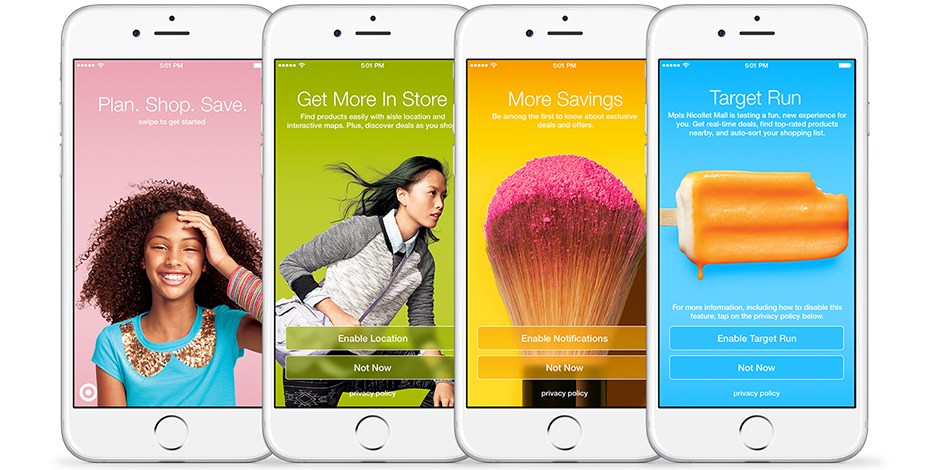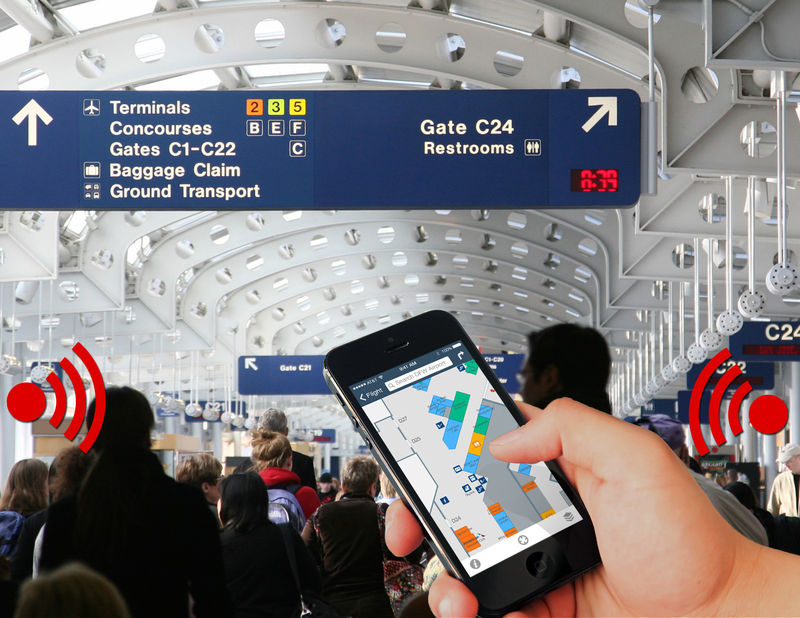While 2015 was projected as the year of beacons, many places took 2015 to slowly rollout and test their beacon strategy. In 2016, we will begin to see more gradual rollouts and full integration of beacon technology. ABI Research believes “Bluetooth Low Energy (BLE) beacons are finally set to hit the mainstream in 2016, following a strong 2015 third quarter in shipment data and contract figures.”
“ABI Research populated its contract tracker with a handful of impactful names in the last quarter, including IKEA, H&M, Macy’s, Target, Pizza Hut, Elle, Espirit, McDonalds and Carrefour,” says Patrick Connolly, Principal Analyst at ABI Research. “Meanwhile, companies like Groupon, Facebook and Google are starting to bring their SME beacon strategies to market. Adoption is now across the retail board with really strong interest from the Quick Serve Restaurants (QSR), as well as banking sectors.”
With many industries finishing testing and approaching full rollouts, here are 5 industries you can expect to see beacons in 2016.
Retail
Retail stores have been increasingly adopting beacons since their inception. Nearly one-third (32%) of the Top 100 retailers in the United States will have deployed at least some beacons this year, according to Business Insider, and 85% will have beacons by the end of 2016. That’s a sizeable jump.
Target will be one of the first retailers to begin a full rollout in 2016. Target began testing back in August across 50 stores and are expected to continuously rollout their beacons into more stores. Target’s beacons integrate within the Target app. Unlike some retail stores that integrate within third party app such as ShopKick.

Other retailers including Alex & Ani, American Eagle, Lord & Taylor, Macy’s, and Urban Outfitters also have plans for an expanded rollout.
Festivals
Integrating beacons at festivals started in 2014 with SXSW. In 2015, we saw both SXSW and the Cannes Lions Festival integrate beacons with their apps. After being a hit with attendees, I expect to see many more festivals integrate beacons during 2016.
At Cannes Lions in July, beacons were placed around the event to provide many different interactive experiences and deliver real-time information to attendees.
The app was created by Eventbase, who incorporated 4 different things with beacon technology.
- The Around Me section of the app employs location-based targeting to find people who have checked into venues. Festival goers can also see which sessions are the most talked about.
- On top of the geo-targeting, the app looked at LinkedIn profiles to connect online connections offline. This can provide a lot of value because this typically means you’re meeting that person for the first time.
- The app sends out mass push notifications to everyone about schedule changes and information about the event. There’s also a planner to map out which sessions people want to go to and a section with videos from presentations.
- If the beacons detect that someone has stayed in a session for 15 minutes or more, the app will automatically save the session as a favorite. The liked panels then serve as a virtual icebreaker for attendees to find common interests.

“We’re trying to work on that nirvana use case where you walk into a room and networking can be quite awkward—how do you decide who to talk to?” Eventbase founder Jeff Sinclair said. “With the app, you can actually see everyone else who is checked in at that venue, reach out to them and focus on the people who are the highest-value connections to you.”
For more information about beacons and Cannes Lions, Check out the article here.
The Consumer Electronics Show that took place last week in Las Vegas also used beacons to enhance the experience. They chose to do a scavenger hunt.
“Attendees with the official CES App on iOS or Android devices will have the opportunity to earn Scavenger Hunt “badges” by exploring key areas of the show. All Scavenger Hunt locations will be powered proximity beacons and services that will trigger participants’ mobile apps when they are near a Hunt location. Detailed Scavenger Hunt instructions are included in the CES App.”
The first three winners got cameras and other participants were eligible to receive prizes throughout the week.
It’s the first week of 2016 and we are already seeing beacons being used at events. It is safe to say that you can expect to see many more events integrate beacons like the Cannes Lions Festival and CES did. So keep an eye out for beacons at festivals in 2016.
Sporting Events
Sporting events have been extremely friendly to beacon technology. They started adopting in 2014 and haven’t slowed down since. The MLB and the NBA have many teams that have fully rolled out beacons within their stadiums and arenas and those teams are extremely happy with the results.
“Beacon-supported proximity marketing is eclipsing geofence-based push companies because we can send a message when someone is in line for the men’s room, not just in the stadium,” said Alex Bell, co-founder of Sonic Notify, the Warrior’s proximity-technology partner. “We have proved with GSW [Golden State Warriors] that when done right, it does drive fan engagement.
“GSW saw a 69 percent increase in seat upgrade revenue via app after installing our proximity marketing solution,” he said.
You can read more about beacons and the Golden State Warriors here. Or check out the video below to see it in action.
Travel
Airports such as Heathrow and Dallas/Fort Worth have already begun using beacons in certain lounges around the airport. Focusing more on the experience during downtime than anything else. But in the next three years airports are expecting to use beacons and the IoT to solve more of the bigger issues they encounter such as passenger processing, operations, and beacon processing.
A study that was conducted by the Airports Council International and SITA, indicates where beacon will be used. Here’s how airports plan the use of beacons, by location, in three years:
- 61% — Check-in
- 61% — Security
- 57% — Boarding
- 56% — Dwell time (restaurants, coffee shops, etc.)
- 55% — Bag drop
- 45% — Border control
- 40% — Bag claim
- 36% — Transfer
Beacon technology will be integrating within airlines apps, helping travelers move through the airport without hassle, receive updates on the status of their flights, and receive coupons and offers from the businesses within the airport. I believe 2016 will lead to many airports doing some trial runs to test how beacons can best be integrated in their systems. But no doubt, keep an eye out for beacon technology in airports throughout 2016.

Entertainment
Disappointedly, the entertainment industry is still light on beacon implementation. Back in 2014, we saw the Guggenheim begin testing beacons in the museum, which many people believe will be the future for every museum. The Odeon Cinema in the UK also began using beacons and have experienced success. Yet, not many other entertainment entities other than sporting events and festivals have begun using beacons.
In 2016, I believe we will begin to see the entertainment industry begin testing beacons. It is only a matter of time before amusement parks, movie theaters, museums and other family entertainment options see the potential of beacons within their business.

Look out for beacons everywhere in 2016
Many businesses will be looking towards beacons in their 2016 marketing strategy. We’ve already seen certain industries, such are the sports industry and retailers, capitalize on what beacons have to offer. So we can count on them to lead the way into the year of beacons.













